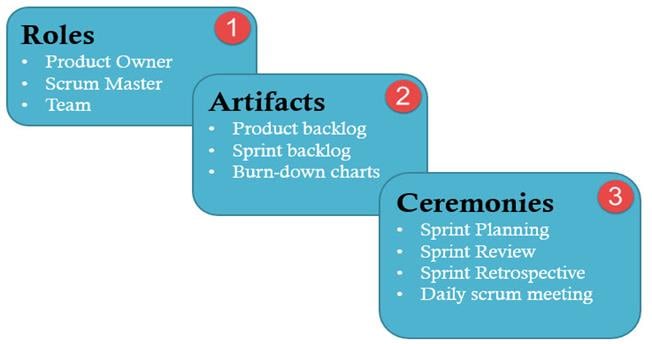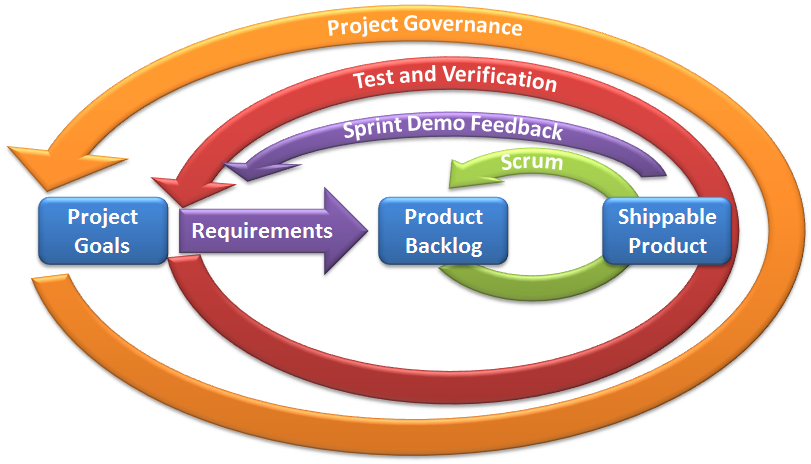The Fundamentals of Scrum Testing
Scrum in Software Testing
Scrum is a methodology for developing complex software applications, offering straightforward approaches for handling intricate tasks. The Scrum methodology supports the software development team in prioritizing various aspects of the product, including quality, performance, and usability. Additionally, it ensures transparency and promotes frequent inspection and adaptation during the software development process, reducing complexity.
Scrum Testing
In Scrum methodology, Scrum Testing is conducted to ensure that the software application meets its requirements. This form of testing evaluates non-functional aspects like security, usability, and performance. Testers do not play an active role in the process, and it is typically carried out by developers through Unit Testing. The need for dedicated test teams may arise depending on the nature and complexity of the project.
Key Features of Scrum Methodology
Following are Key Features of Scrum-
Scrum is a method with a compact, predetermined release timeline consisting of flexible sprints to keep up with the rapid evolution of development needs. Each release cycle can comprise of several sprints, and a single Scrum project can have multiple release cycles.It involves a recurring sequence of events, gatherings, and key points.A methodology of evaluating and executing new demands, referred to as stories, ensures that work is delivered in a ready-to-release state after each sprint.
Scrum is based on the following 3 Pillars-

Let’s look at the one by one.
1. Role
In Scrum, there are three primary roles involved in testing:
- Scrum Master: The Scrum Master is responsible for ensuring that the Scrum team is adhering to the Scrum framework and its principles. In terms of testing, the Scrum Master helps the team identify testing needs, creates a testing strategy, and ensures that testing is carried out throughout the project. The Scrum Master may also facilitate communication between the development team and other stakeholders, including the product owner and customers.
- Product Owner: The Product Owner is responsible for defining and prioritizing the product backlog, which is a list of features and requirements that the product should have. In terms of testing, the Product Owner works with the development team to ensure that testing is aligned with the product vision and that testing is integrated into the product development process. The Product Owner may also be involved in user acceptance testing, which is a critical aspect of ensuring that the product meets the needs of its users.
- Development Team: The Development Team is responsible for creating the product, including designing, building, and testing it. In terms of testing, the Development Team is responsible for identifying testing needs, creating test cases, executing tests, and reporting on test results. The Development Team may also be involved in other aspects of testing, such as test automation and performance testing.
It’s important to note that in Scrum testing, everyone is part of the team, and each role is critical to the success of the project. The Product Owner, Scrum Master, and Development Team work together to ensure that the product is delivered on time, within budget, and meets the customer’s needs.
2. Artifacts
In Scrum testing, an artifact is a tangible item or document that is created during the software development process and is used to facilitate communication and collaboration among the team members. The Scrum framework defines three main artifacts:
- Product Backlog: It is a prioritized list of requirements or user stories that the team works on during the development process. The product backlog is constantly evolving and updated as the project progresses.
- Sprint Backlog: It is a list of tasks that the team has committed to completing during a sprint. The sprint backlog is created during the sprint planning meeting and is used as a guide throughout the sprint.
- Increment: It is the sum of all the completed product backlog items at the end of a sprint. The increment must be in a usable condition and meet the Definition of Done (DoD) to ensure that it meets the customer’s needs.
Other artifacts that may be used in Scrum testing include sprint goals, burndown charts, and retrospective reports. These artifacts help the team to plan, track, and evaluate their progress throughout the development process and ensure that the final product meets the customer’s requirements.
3. Ceremonies
The following are the five ceremonies that are typically used in Scrum testing:
- Sprint Planning: This ceremony is held at the beginning of each sprint, which is a timeboxed period of development. The team meets to plan the work that will be done during the sprint, including defining the sprint goal, identifying the work to be done, and estimating the effort required to complete each task.
- Daily Scrum: This is a daily stand-up meeting that is held to keep the team synchronized and to identify any issues or roadblocks that may be preventing progress. Each team member answers three questions: What did I do yesterday? What will I do today? Are there any impediments in my way?
- Sprint Review: At the end of each sprint, the team holds a review meeting to demonstrate the work that was completed during the sprint and to get feedback from stakeholders. The team discusses what went well, what didn’t go well, and what can be improved in the next sprint.
- Sprint Retrospective: This is a meeting that is held after the Sprint Review to reflect on the sprint and to identify any areas for improvement. The team discusses what went well, what didn’t go well, and what can be improved in the next sprint.
- Backlog Refinement: This ceremony is not an official part of Scrum but is often used to keep the backlog updated and to ensure that the team is working on the most valuable tasks. The team meets to review and prioritize the backlog items, estimate the effort required for each item, and break them down into smaller, more manageable tasks.
Overall, the Scrum ceremonies are intended to ensure that the team is working collaboratively and efficiently, that any issues or roadblocks are identified and addressed in a timely manner, and that the project is progressing as planned.
ALSO SEE: Accelerate Testing with an Agile Automation Framework


